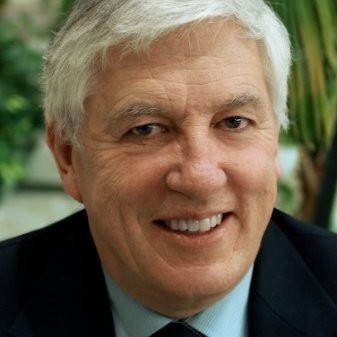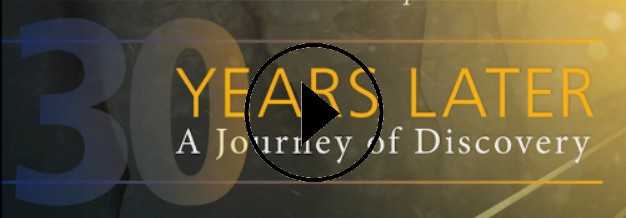30 Years Later – A Journey of Discovery

Peter K. Kaiser
Prof. Emeritus, Ph.D, P.Eng., F.EIC, F.CAE,
Bharti School of Engineering, Laurentian University, Sudbury, Canada
Dr. Peter K Kaiser is a graduate of the Federal Institute of Technology in Zurich, Switzerland, and the University of Alberta in Edmonton, Canada. Between 1987 and 2015, he was Chair for Rock Engineering and Ground Control at Laurentian University and in 1997 became the Founding President of MIRARCO-Mining Innovation. Between 2007 and 2014, he was seconded to lead the Centre for Excellence in Mining Innovation (CEMI) and then the Rio Tinto Centre for Underground Mine Construction (RTC-UMC).
He is the author of more than 350 technical and scientific geomechanics publications and has received awards from the International Society for Rock Mechanics, the Canadian Geotechnical Society and the Canadian Institute of Mining. He is a Fellow of the Engineering Institute of Canada (EIC) and the Canadian Academy of Engineers. In 2013, he was awarded the Julian C. Smith Medal of for his “Achievements in the Development of Canada” and was named the “Tunneller of the Year” by the Tunnelling Association of Canada.
He is a specialist in applied research for underground construction and mining with primary interests in rock engineering, rock support in burstprone ground, mine design and the application of innovative technologies to increase mine safety and productivity. He brings extensive experience from both the industrial and academic sectors, having served as consultant to numerous consulting companies, mines, and public agencies. He has supported contractors, mining companies and public sector clients during Coroner’s inquests and litigations.
The inaugural “Last Lecture” will honour Dr. Peter Kaiser’s contribution to the world of mining & engineering. His lecture will highlight his 30 year-long journey of discovery as Professor of Mining Engineering and Chair for Rock Engineering & Ground Control at the Bharti School of Engineering. Peter’s contributions also include being Founding President of MIRARCO, Founding Director of the CEMI and Director of Rio Tinto Centre for Underground Mine Construction.
To learn more about Dr. Kaiser’s professional research, please visit https://geo-kaiser.ca.
-
Lectures
-
Books
-
Selected Articles
-
Recently Requested
2024 – 4th Distinguished ARMA lecture – From Common to Best to Common Practices in Underground Rock Engineering in Burstprone Ground
58TH US ROCK MECHANICS/GEOMECHANICS SYMPOSIUM, Golden, Colorado
Abstract
Many ‘common practices’ are still not ‘best practices’ when judged from an economic or workplace safety perspective. This is of particular concern because underground rock engineering is essentially self-regulated as few if any engineering codes and standards exist to guide professional engineers in the fulfillment of their professional duties, amongst others, to hold paramount the safety, health, and welfare of the public, and to only perform services in areas of their competence.
‘Common practices’ essentially become ‘standard’ practise even if they are flawed or ineffective. Hence, it the responsibility of qualified professionals to always question ‘common practices’ and improved them to arrive at ‘best practices’ that lead to safer and more economic solutions. With new and emerging hard- and soft-ware technologies, this is more pressing than ever. For these reasons, this lecture revisits this topic by sharing lessons learned from critically evaluating some flawed ‘common rock engineering practices’. Specifically, the following three topics are addressed: rock mass characterization to understand failure process, the need for verifiable support design methods building on credible stress models, and quantified (rockburst) hazard assessment.
Most importantly, it is concluded that the introduction of ‘best practices’ demands formal change management procedures, whether in consulting or in corporations, combined with ongoing training of qualified personnel. In other words, only when ‘best practices’ have become credible ‘common practices’ that stands the test of time and hold true in court will we be successful in de-risk construction and mining operations.
2019 - 8th ISRM Mueller lecture – From Common to Best Practices in Underground Rock Engineering
14th ISRM Congress, Brazil, CRC Press, pp. 141-182 in e-bookg
Abstract
Common practices are not necessarily best practices when judged from an economic or workplace safety perspective. As in other engineering disciplines, it is necessary to systematically improve engineering design practices. This lecture addresses some deficiencies in common practice that may lead to flawed or ineffective rock engineering solutions. More than ever, as we go deeper in underground construction, are rock engineers challenged by a number of opportunities that exist for improvements. In the past, common practices that worked well at shallow depth may need to be replaced as the rock mass behavior has changed and poses new hazards at depth. This lecture focuses specifically on opportunities resulting from better means to assess the vulnerability of excavations, to characterize the rock mass, for ground control, and rockburst damage mitigation. Theoretical considerations and field observations are used to justify the proposed changes and highlight practical implications and benefits. In the spirit of Prof. L. Müller, this lecture aims at pointing the way to future improvements in rock engineering, i.e. ‘im Felsbau’, and offers guidance on how to move from common to best practices.
2016 Muir Wood Lecture – Ground Support for Deep Underground Construction
Challenges of managing highly stressed ground in civil and mining projects
For the economic and safe construction of deep tunnels, a contractor has to be presented with efficient and effective support systems, i.e., support classes that can be rapidly installed and are effective in managing stress-fractured ground. For this purpose, it is necessary to properly anticipate the actual rock mass behaviour and to provide flexible but reliable means of ground control. In mining, mining-induced stresses changes further damage rock near excavations and excessive rehabilitation often causes undesirable delays and costs. In these situations, a deformation-based support design approach is needed to prevent overloading of the rock support system by excessive deformations and to sequence the support installation for optimal support performance.
In practice, robust engineering approaches have to facilitate cost-effective construction processes by ensuring that all construction tools work well. Within this framework, the lecture will focus on four technical aspects and the author draws on experiences in deep mining and Alpine tunnelling. Findings from collaborative research and “real world” experiences are merged to highlight sound engineering design practices that respect the reality of construction and the demand for workplace safety.
Watch the lecture Video
See the lecture PDF
See the replacement figure 17 on “Muir Wood Lecture 2016”
ARMA 16-MTS lecture – Underground Rock Engineering to Match the Rock’s Behaviour
Challenges of managing highly stressed ground in civil and mining projects (Executive Summary)
Abstract
In the spirit of the conference theme of the 50th US Rock Mechanics Symposium, this lecture addressed one of many prerequisites for “exciting advances in rock mechanics”, i.e., the need to fully comprehend the rock mass behaviour before solving “practical issues” in rock engineering. In most engineering fields it is possible to select the best fitting, artificial materials for a given engineering solution. In rock engineering however, a misfit between the behaviour of a natural material, the rock, and a chosen engineering solution often leads to serious complications with costly project delays or rehabilitation works and sometimes with unacceptable safety risks.
Proper rock engineering means to fit the engineering solution to the actual rock mass behaviour! Overcoming the challenge of matching the rock behaviour with meaningful engineering models and design parameters is therefore a prerequisite for advances in rock mechanics and for successful rock engineering. This lecture highlights some recent advances in understanding rock mass behaviour for the design and construction of underground excavations.
ARMA 16-571 – Role of Large Scale Heterogeneities on In-situ Stress and Induced Stress Fields
by Peter K Kaiser, S.M. Maloney, MIRARCO and Salina Yong, now Knight Piésold
13th ISRM lecture 2016 – Challenges in Rock Mass Strength Determination for the Design of Underground Excavations
Abstract
Rock mass characterization for deep underground construction and mining offers many challenges. This lecture builds on a paper presented at the 2015 ISRM Congress in Montreal. It first describes some of the key challenges when characterizing rock and then offers guidance on how to arrive at reliable rock mass strength parameters for the engineering design of deep underground excavations. The limitations of various available rock mass classification systems, developed for excavation stability assessments and support selection, and rock mass characterization systems, developed for the purpose of rock mass strength determination, are also briefly discussed.
The main part of the lecture deals with rock mass characterization for strength determination and on practical implications for the design of deep underground excavations. It is illustrated how common practices in the use of available rock mass characterization systems often tend to underestimate the rock mass strength, particularly when well confined at depth. Improvements to currently adopted approaches are presented to help overcome these challenges. The practical relevance of reliable rock mass strength determination is illustrates by case examples from civil tunnelling and mining applications.
2021
Rock Support to Mitigate Rockburst Damage Caused by Dynamic Excavation Failure
Kaiser, P.K. and M. Cai, Volume II of Rockburst Support Reference Book (manuscript in preparation).
2018
Rockburst Phenomena and Support Characteristics
M. Cai and P.K. Kaiser, Volume I in Rockburst Support Reference Book, 191 p.
2017
Excavation vulnerability and selection of effective rock support to mitigate rockburst damage
P.K. Kaiser in “Rockburst: mechanisms, monitoring, warning, and mitigation”, X.-T. Feng (Ed.), New York: Elsevier. ISBN: 978-0-12-805054-5, 473–518.
1996
Support of Underground Excavations in Hard Rock
Hoek, E., Kaiser, P. K., and Bawden, W. F.
Canadian Rockburst Support Handbook
Kaiser, P. K., McCreath, D. R., and Tannant, D. D.
- R.P. Bewick, P.K. Kaiser, F. Amann 2019. Strength of massive to moderately jointed hard rock masses. Journal of Rock Mechanics and Geotechnical Engineering 11 (2019) 562-575.
- Kaiser PK, MS Diederichs, CD Martin, J Sharp, W Steiner 2000. Underground works in hard rock tunneling and mining. Keynote lecture at GeoEng2000, Melbourne, Australia, Technomic Publishing Co., 1: 841-926.
More coming soon...
Coming soon...

